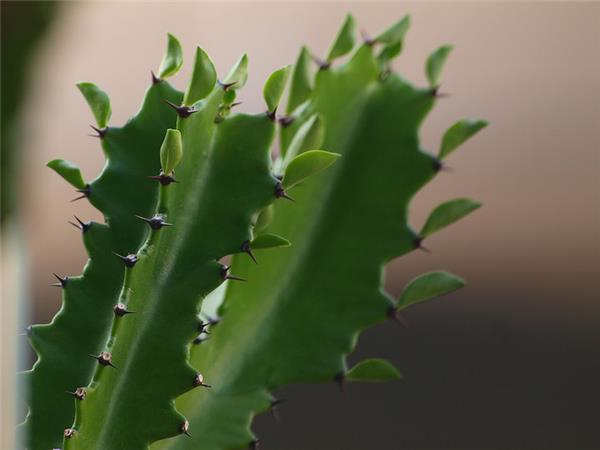What are the culture methods and matters needing attention of keel flower
Before learning how to plant and maintain keel flowers, let's take a look at the application of keel flowers at home, so that we can understand why we must choose to cultivate keel flowers.

Fengshui Application of Dragon Bone Flower in the Center of Home
Generally speaking, the places where fengshui has the function of prosperity, such as balcony plants, are relatively tall and sturdy, and the thicker the leaves are, the greener the greens are, the better, so the evergreen plants with large leaves in the strong position have the effect of thriving. In unfavorable directions, for example, if you look out of the balcony, the surrounding environment is bad, there is an angle nearby, the street is straight, the street is anti-bow, or facing temples, hospitals, cemeteries, and so on, plants that can ward off evil spirits must be placed. Usually, the difference between chemical evil spirit plants and thriving plants is that their stems or flowers and leaves have spines, so the placement of prickly plants such as cacti has the effect of "turning evil spirits", making them avoid giving up and protecting the home; as for other directions, it does not have much impact on any plant.
Such a domineering and unique plant like keel, the stem grows tall and straight upward, shaped like an upright dragon spine, full of power, most suitable for being placed in an unfavorable position, and has a strong resistance to the outside.

The Culture method of Dragon Bone Flower
Habit: climbing plants. Have epiphytic habits, using air roots to attach to tree trunks, walls or other objects. The berries are oblong and red. Sexually strong. Like warm, warm air. It should be semi-overcast and the plants will turn yellow in the strong direct sunlight. The suitable temperature for growth is 25 ~ 35 ℃. It is sensitive to low temperature, and the stem nodes are easy to rot under the condition of less than 5 ℃. Like the fertile loam with more humus, the pot soil can be prepared with the same amount of rotten leaves, coarse sand and mature barnyard manure.
Soil: planting soil that is loose, fertile and rich in humus. Pot soil can be mixed with 1 part of rotten leaf soil and 1 part of coarse sand and mixed with a small amount of mature chicken manure or cow manure.
Lighting: it is suitable to grow under semi-shady conditions, although it is resistant to sunlight, but in order to avoid yellowing in strong light, shading measures should be taken in summer and placed in a place where you can see light in winter to receive a certain amount of sunlight. Indoor plants had better be placed in places such as balconies and windowsills where light can be seen.
Temperature: the dragon bone flower likes the warm environment, is not cold-resistant, is afraid of frost, the winter temperature should be above 10 ℃ in order to survive the winter smoothly, and give the right amount of uniform light, not less than 7 ℃ to avoid frostbite.
Watering: spring watering should not be too much, watering once every 10-15 days, but should be sprayed to the plant every day to increase air humidity. It should be watered once a day in summer, preferably in the morning or evening. The basin soil should be kept moderately dry in winter.

Fertilization: the dragon bone flower can apply thin fertilizer every 15-20 days, such as granular compound thin fertilizer or self-made alum fertilizer, which can promote plant growth, mainly do not apply too thick fertilizer, it is easy to cause fertilizer damage and root rot.
Pruning: the tip of the newly cultivated plant can be removed when it reaches 10-15cm, and the new branch only needs to retain three branches with good growth at the top of each corner. When the plant grows to 20-25cm, the top is removed, and then the top is removed according to the length of the previous branch plus 10 cm, and the direction of the branch should be determined according to the ornamental angle. Such a trimmed keel flower plant type is plump, rich ornamental.
Overwintering: plastic film basin bandaging can be used to protect overwintering. The overwintering cultivation environment should maintain both high temperature and high air humidity.
Harvest: Bawang flower blossoms from May to November, about 7-8 periods, with an interval of about 20 days. The size of the flower is 25-30 days after budding. At this time, it is also the best harvest time. The best harvest time is the morning or afternoon after blooming. The flowers on the market and for export are dried flowers processed.

Keel flower tall and straight, domineering and powerful, breeding at home not only add domineering feeling, but also add a lot of vitality, so it is very worthwhile for friends who want to try to grow flowers.
- Prev

Will golden branch jade leaf plant blossom? how to raise golden branch jade leaf plant?
Will golden branch jade leaf plant blossom? how to raise golden branch jade leaf plant?
- Next

What are the breeding methods and culture methods of weeping potted grass?
What are the breeding methods and culture methods of weeping potted grass?
Related
- Wuhan Hospital Iron Tree Blooming Result Was Instantly Frightened by the Gardener Master
- Which variety of camellia is the most fragrant and best? Which one do you like best?
- What is the small blue coat, the breeding methods and matters needing attention of the succulent plant
- Dormancy time and maintenance management of succulent plants during dormancy
- Minas succulent how to raise, Minas succulent plant pictures
- What are the varieties of winter succulent plants
- How to raise succulent plants in twelve rolls? let's take a look at some experience of breeding twelve rolls.
- Attention should be paid to water control for succulent plants during dormant period (winter and summer)
- Watering experience of twelve rolls of succulent plants
- Techniques for fertilizing succulent plants. An article will let you know how to fertilize succulent plants.

